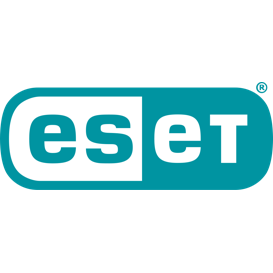IT Security Solutions

In an era of increasing cyber threats and digital transformation, IT security has become a top priority for businesses of all sizes. Cyberattacks are not only becoming more frequent but also more sophisticated, targeting critical data and infrastructure. Organizations must adopt robust IT security solutions to safeguard their digital assets, ensure compliance, and maintain customer trust. This article explores the key IT security solutions businesses should implement to protect against evolving threats.
Firewalls and Intrusion Detection Systems (IDS)
A strong perimeter defense is essential for any IT infrastructure.
- Firewalls: These act as the first line of defense, monitoring and controlling incoming and outgoing traffic based on predefined security rules. Modern firewalls include next-generation features like application awareness and integrated threat intelligence.
- Intrusion Detection Systems (IDS): These tools monitor network traffic for malicious activity, providing alerts when suspicious behavior is detected. When combined with Intrusion Prevention Systems (IPS), they can actively block threats.
Endpoint Security
Endpoints such as laptops, desktops, and mobile devices are common targets for cyberattacks.- Antivirus and Anti-Malware: These solutions protect devices from viruses, ransomware, and other malicious software.
- Endpoint Detection and Response (EDR): EDR tools offer advanced threat detection and response capabilities, enabling organizations to quickly identify and mitigate endpoint threats.
Identity and Access Management (IAM)
Controlling who can access your systems and data is critical for IT security.
- Multi-Factor Authentication (MFA): Adds an additional layer of security by requiring users to verify their identity through multiple factors, such as a password and a one-time code.
- Single Sign-On (SSO): Simplifies authentication processes by allowing users to access multiple applications with a single set of credentials.
- Role-Based Access Control (RBAC): Restricts system access based on an individual’s role within the organization, minimizing the risk of unauthorized access.
Data Encryption
Encryption ensures that sensitive data remains secure, even if it is intercepted.
- In-Transit Encryption: Protects data as it travels between devices and servers using protocols like HTTPS and SSL/TLS.
- At-Rest Encryption: Safeguards stored data, whether on physical servers, cloud systems, or portable devices, using robust encryption standards such as AES-256.
Cloud Security Solutions
As organizations increasingly adopt cloud services, securing cloud environments is vital.
- Cloud Access Security Brokers (CASB): Provide visibility and control over data stored in the cloud.
- Secure Access Service Edge (SASE): Integrates networking and security functions into a unified cloud-native service, offering secure remote access.
- Data Loss Prevention (DLP): Protects sensitive information from being shared or accessed without authorization.
Cybersecurity Awareness Training
Employees are often the weakest link in an organization’s security chain.
- Regular training programs can help staff recognize phishing attempts, use strong passwords, and follow security best practices.
- Simulated phishing campaigns can test and improve employee awareness in real-world scenarios.
Zero Trust Architecture
A zero trust model assumes that threats exist both outside and inside the network.
- Verify Every User and Device: Continuously authenticate and validate access requests.
- Least Privilege Access: Users are granted only the access necessary to perform their tasks.
- Micro-Segmentation: Divides the network into smaller zones to contain potential breaches.
Incident Response and Recovery
Preparing for cyber incidents is as important as preventing them.
- Incident Response Plans: Define roles, procedures, and tools needed to detect, respond to, and recover from security incidents.
- Backup and Disaster Recovery: Regularly back up critical data and systems, ensuring that recovery is fast and efficient in the event of an attack like ransomware.
Artificial Intelligence and Automation in Security
AI-powered security tools are transforming how businesses detect and respond to threats.
- Threat Intelligence Platforms: Use machine learning to analyze vast amounts of data, identifying potential risks in real time.
- Automated Incident Response: Reduces response times by automating routine security tasks, such as isolating infected devices.
Continuous Monitoring and Compliance
Maintaining security is an ongoing process.
- Security Information and Event Management (SIEM): Aggregates and analyzes logs from various systems to detect anomalies.
- Compliance Management Tools: Help organizations adhere to regulatory standards like GDPR, CCPA, or PCI DSS by ensuring security practices align with legal requirements.
The ever-evolving landscape of cyber threats demands a proactive and comprehensive approach to IT security. From endpoint protection to advanced AI-driven tools, businesses must leverage a variety of solutions to safeguard their operations. By prioritizing security at every level, organizations can reduce risks, protect their data, and maintain trust with their stakeholders.
Cyber Security Solution Vendors
Backup & Recovery Solution Vendors
Ready to elevate your business?
Get in touch with Intech for innovative IT solutions and expert consulting tailored to your success!”
contact us today and transform your business with Intech’s expert IT solutions!













